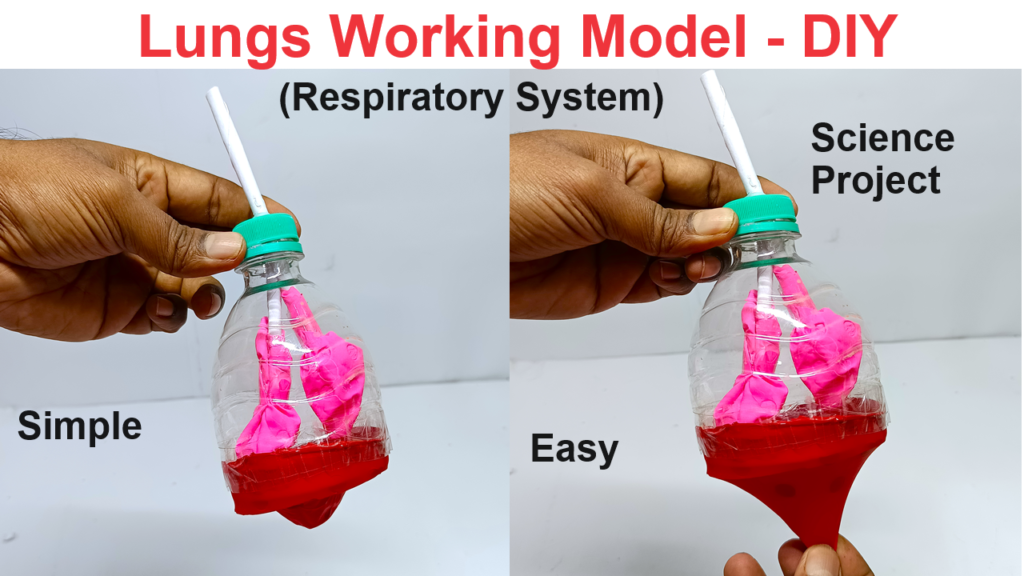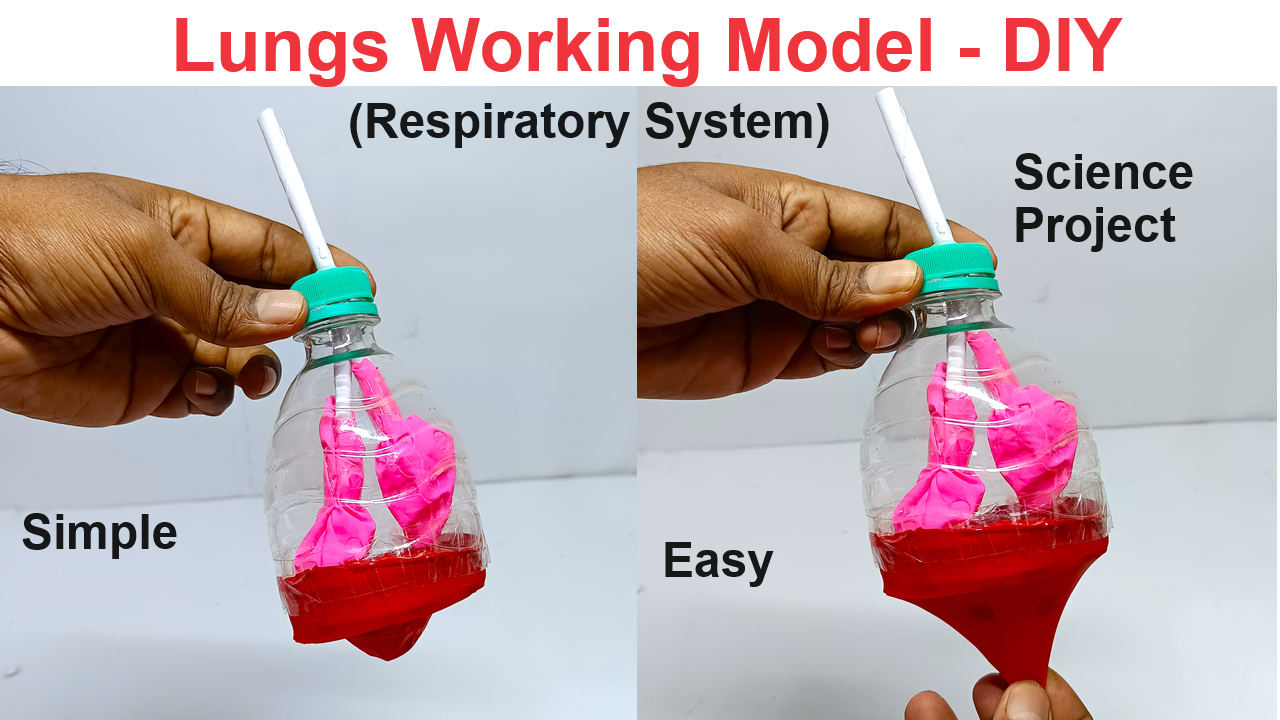Creating a working model of lungs using plastic bottles, balloons, and straw pipes can be a fantastic and educational project. This model will demonstrate how the lungs work, illustrating the process of inhalation and exhalation.

Here’s how you can make this model step-by-step:
Materials Needed:
- One large plastic bottle (1.5 or 2-liter soda bottle)
- Two balloons (one for each lung)
- One balloon (for the diaphragm)
- Two straws (for the bronchi)
- Rubber bands
- Scissors or a craft knife
- Tape
- Hot glue gun or strong adhesive
- Modeling clay or putty
Steps by Steps Video Instructions :
1. Prepare the Plastic Bottle:
- Cut the Bottom: Carefully cut off the bottom of the plastic bottle using scissors or a craft knife. This will serve as the base of your lung model.
2. Prepare the Lungs:
- Attach Balloons to Straws: Stretch the open end of each balloon over one end of a straw. Secure them with rubber bands or tape to ensure no air can escape.
- Insert Straws into the Bottle: Insert the other end of each straw into the neck of the bottle and seal around the bottle’s neck with modeling clay or putty to ensure it’s airtight. These straws represent the bronchi, and the balloons represent the lungs.
3. Prepare the Diaphragm:
- Cut the Balloon: Take a large balloon and cut off the narrow part (the neck of the balloon).
- Attach the Diaphragm: Stretch the cut balloon over the open bottom of the bottle, securing it with a rubber band or tape. This balloon represents the diaphragm.
4. Final Assembly:
- Seal the Diaphragm: Ensure the diaphragm (the stretched balloon at the bottom) is tightly sealed around the bottom of the bottle. Use tape or additional rubber bands if necessary.
- Test the Model: Pull down on the diaphragm balloon. This action should cause the balloons inside the bottle to inflate, simulating inhalation. When you release the diaphragm, the balloons should deflate, simulating exhalation.
5. Demonstrate the Model:
- Inhalation: When the diaphragm (the bottom balloon) is pulled down, it increases the volume inside the bottle, causing the pressure to drop and the balloons (lungs) to inflate as air is sucked in through the straws (bronchi).
- Exhalation: When you release the diaphragm, it moves back up, decreasing the volume inside the bottle, causing the pressure to increase and the balloons (lungs) to deflate as air is pushed out.
Visual Layout:
- The plastic bottle represents the chest cavity.
- The two balloons inside represent the lungs.
- The straws represent the bronchi (airways).
- The balloon at the bottom represents the diaphragm.
Final Touches:
- Label the Model: Use labels to indicate the different parts of the model: lungs, bronchi, diaphragm, and chest cavity.
- Explanation: Include a brief explanation of how the diaphragm and lungs work together to facilitate breathing.
This simple yet effective model visually demonstrates the mechanics of breathing, making it an excellent educational tool for understanding lung function.

